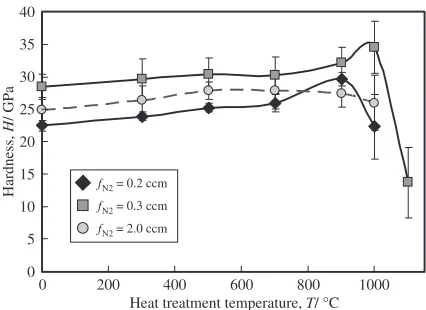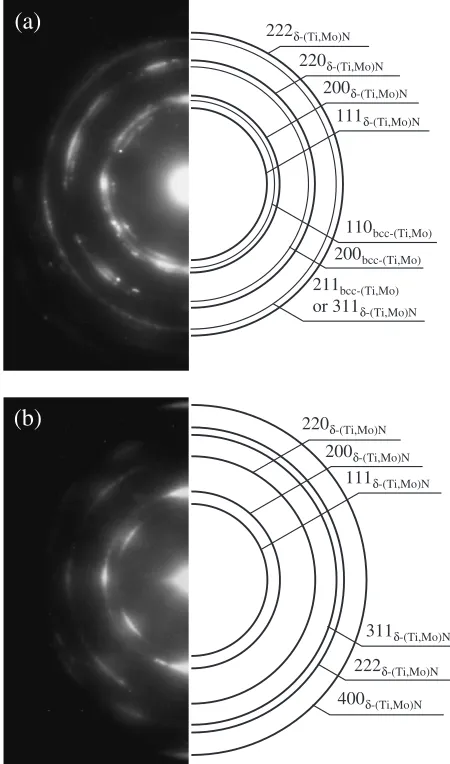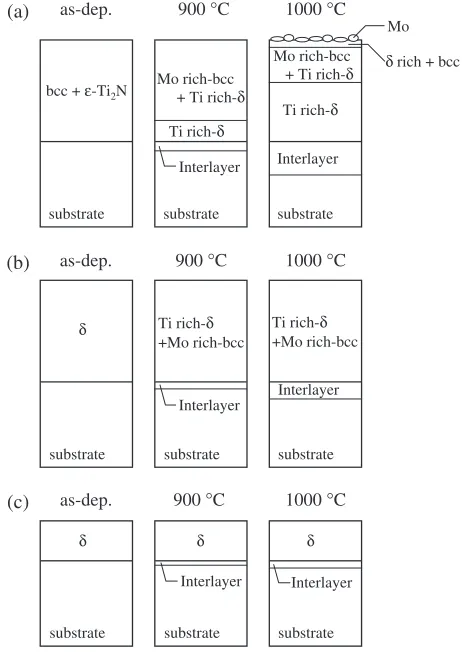Effect of Heat Treatment on the Hardness of Ti Mo N Films Deposited by RF Reactive Magnetron Sputtering
Full text
Figure

![Fig. 3XRD patterns of the Ti-Mo-N films deposited at various nitrogen gas flow rates of [A] fN2 ¼ 0:2 ccm, [B] 0.3 ccm, and [C] 2.0 ccm,in (a) as-deposited specimens and specimens heat treated at (b) 300, (c) 500, (d) 700, (e) 900, (f) 1000, and (g) 1100�C.](https://thumb-us.123doks.com/thumbv2/123dok_us/333448.531713/3.595.103.495.75.358/patterns-deposited-various-nitrogen-deposited-specimens-specimens-treated.webp)


Related documents
• Follow up with your employer each reporting period to ensure your hours are reported on a regular basis?. • Discuss your progress with
The uniaxial compressive strengths and tensile strengths of individual shale samples after four hours exposure to water, 2.85x10 -3 M cationic surfactant
4.1 The Select Committee is asked to consider the proposed development of the Customer Service Function, the recommended service delivery option and the investment required8. It
SearchSOA.com experts examine unique aspects to SOA implementation and offer an SOA implementation checklist in which practices need to be considered as part of typical strategic
National Conference on Technical Vocational Education, Training and Skills Development: A Roadmap for Empowerment (Dec. 2008): Ministry of Human Resource Development, Department
The provision of fermented cassava peel using local microorganisms has a very significant effect (P <0.01) on the quality content of local rams meat in terms of protein content
For concrete with high w–b ratio, the effect of UV radiation on the mass loss ratio was reflected in the early stage of F–T test, whereas that of low w–b ratio concrete was
[r]

